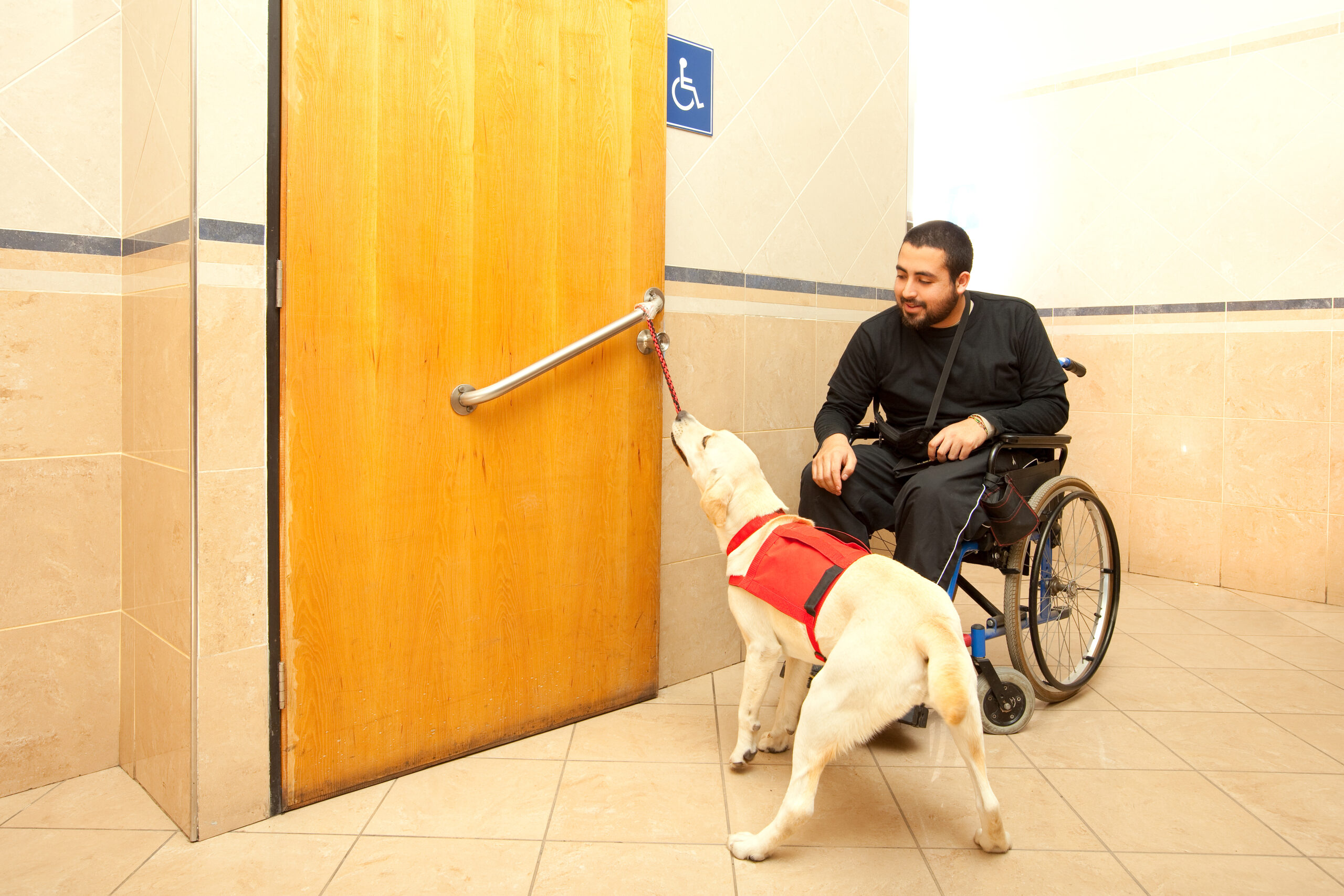The function of a service animal is no different than a cane or a wheelchair — while there is often a deep bond with their handler, they are there to assist with challenges that the handler faces.
“Service dogs should be treated no differently than you would treat a wheelchair,” said Amanda Lombardo, who is a handler herself, and owner of Canine Partners Canada, a training service. “They are highly trained and necessary for the safety of their handler. They are our lifelines.”
Despite service animals being more common, handlers still encounter challenges.
“I’ve had issues in Orangeville with acceptance of service animals,” said Lombardo. “If I’m experiencing this, my concern is that other people are experiencing this. So my goal is to educate people and increase accessibility.”
Lombardo has had stores tell her she couldn’t come in, even though her dog was in mobility gear. Employees approached her in lines, and after confirming it was a service dog, still told Lombardo she couldn’t bring in the dog.
“As I was leaving a store, an employee actually ran after me when I was going to my car, which was scary for me,” said Lombardo.
The Accessibility for Ontarians with Disabilities Act (AODA) notes service animals can be brought into any area open to the public, unless the animal is excluded by another law. Legally, they can be brought into restaurants, stores, grocery stores and taxis.
Businesses aren’t the only area where more education is needed; it’s lacking for the general public as well. Lombardo has had people in public ask for photos of her clients when training, often refusing to accept ‘no’ as an answer.
“You wouldn’t walk up to someone in a wheelchair and ask to take their photo,” Lombardo said.
While Annie McGillivray, who also uses a service dog, hasn’t encountered issues from businesses and stores, she has run into other challenges.
“My biggest gripe is more with the general public coming up and bothering us,” said McGillivray. “I’m still just a person going into a store; my dog isn’t some magical, special thing for them to stare at or look at, I’m just a patron like everybody else.”
Both McGillivray and Lombardo agree these issues stem from a lack of education around service animals. Many people are still more accustomed to guide dogs, where the need for them is often visible.
“I think if there was more education in schools, and in the general public, particularly helping people to understand not to disturb us or our dogs,” said McGillivray. “Also helping people understand not every disability is visible.”
But service animals meet a number of needs — learning how to protect and respond to everything from physical conditions their handlers may have to emotional, reactionary, and behavioural-based challenges.

For example, service animals perform duties beyond companionship for a person with autism. In youths who are prone to eloping (wandering off), there are harnesses that can be attached to keep the dog and youth together. The dogs are also trained to recognize cues such as discomfort, anxiety, increased heart rates and more.
“With PTSD comes disassociation, and when disassociated, it’s like the whole world isn’t real or you just freeze and stare, and that’s when she jumps on me,” explained Lombardo. “Some people get auditory, visual, and emotional flashbacks, and the dog can be there to respond to every single one of them.”
Unfortunately, when it comes to education, there are no major advocacy groups like with other issues, leaving it up to those who need service animals to speak up. It will take grassroots actions to bring the necessary change.
“Unfortunately it falls on us as handlers and our loved ones to help educate others and the public,” said McGillivray. “If we can just do individual efforts like making nicely worded posts, maybe it goes viral, people get educated, and a nationwide standard can be organized.”
STORY BEHIND THE STORY: After continuing challenges when being out in public with her service animal, the Orangeville Banner wanted to speak to Amanda Lombardo and others in the community about how much of an impact service animals have on their lives, and how better education can help reduce misunderstanding in the community.
Source: Orangeville

